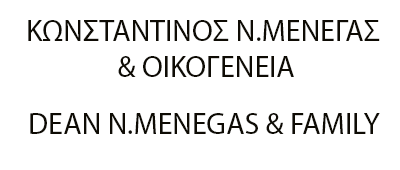Geometric precinct wall
During the years from 2006 until 2010, the early precinct wall (peribolos) of the sanctuary revealed at the south and east side of the hill and according to its construction, is dated to the Late Geometric or Early Archaic period. The early precinct wall came to light about 6.5 m. north of the southwestern end of the precinct wall of the Archaic period, its axis has a north-eastern direction, with a divergence of almost 5 degrees from the archaic precinct and it is bedded upon the porous bedrock, which has been cut in stepped formation. The foundation comprises two parallel courses of large and medium-size unworked limestone blocks, while on the upper level, which is the inner north limit of the fortification wall, is a further course of medium-size rough-hewn limestone blocks. Small stones mask the interstices. The revealed section of the fortification wall stands to a height of 1.10 m, is of overall length 21 m and the thickness of its foundation ranges from 1.30 to 1.80 m. This construction seems to had initially a height from 6 to 7 m. and that it must have reached the level of the still visible foundation on the top of the hill.
The new evidence show that the Late Geometric peribolos of the early sanctuary traversed the whole length of the south side of the hill. During the recent archaeological research, part of the Late Geometric - Early Archaic Peribolos, was uncovered directly east of the so-called "South Building". Specifically, this part of the Peribolos can be identified with the stretch to the west of the early peribolos, shifted about 5 m. south, almost at the same axis with the Archaic peribolos, found to the east.
Together with the majority of the pottery findings this is, therefore, data relevant to the first or early monumental phase of the Amyklaion sanctuary, which most certainly was directly interwoven with the existence of an open-space cult activity and a corresponding cult statue. This opinion is also strengthened by a thin layer of ash that was found at ground level on the whole front side of the wall. Of particular interest is the fact that, destructions in the building technique near the peribolos curvature at the east end indicates a configuration of this space as an entrance to the precinct. The destruction of this construction is possibly dated to the early 6th century B.C. The concave section that is evident in its southeastern corner is an explicit indication of the consequences of an earthquake.
Archaic precinct wall
The objective of the new research project was also to reveal in its full length the already known Archaic monumental precinct wall and to define the existence of an entrance in the northwest part of the hill of Ag. Kyriaki. On the contrary to the previous research, it became clear that the peribolos of the Archaic period, constructed by local conglomerate stone, was not built in the shape of a petal along the south, east and north side of the hill, but it rather surrounded all of its sides. The remaining sizes of the monument are the following: 116 m. of length, 2 m. in height and 2.50 m. of width. Its foundations descend to a depth of 200 m. above sea level. According to metrological analyses, its most characteristic section on the south side reaches 100 Doric feet which corresponds to a hekatompedon. This intentional and emphatic configuration is probably directly related to the procession that took place at Hyakinthia. Successive restorations and interventions on the monument, make it uncertain, whether this was built in a uniform way or gradually. With regard to the later interventions it should, finally, be mentioned that the monument bears traces which lead to information on its extension and repair, but also to more general measures of maintenance which must had been carried out during the Roman and Byzantine period.
The new research also brought to light the remains of the monumental entrance of the sanctuary, in the form of a roofed prolylon, 6.30 m. width, on the northwestern side of the Archaic peribolos' course, in between buildings of a later date. The structure must have been abolished and destroyed in the Early Byzantine period, as deduced from the existence of cist graves in the middle of the entrance.
The function of both the Late Geometric and the Archaic precinct walls was at the same time that of a retaining wall, having initially a height of 7 m. and 3 m. width, in order to restrain the bulk of soil from the hill and to ensure its static stability.










